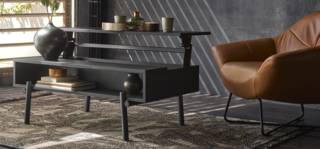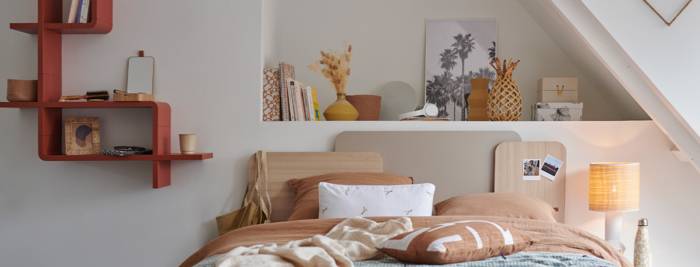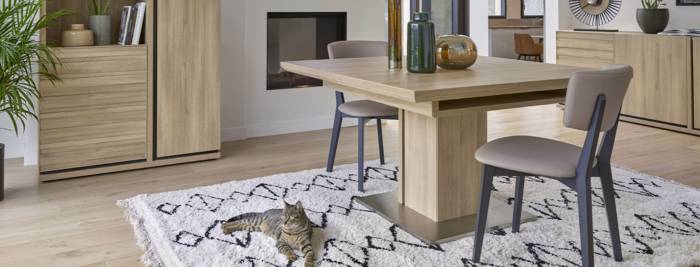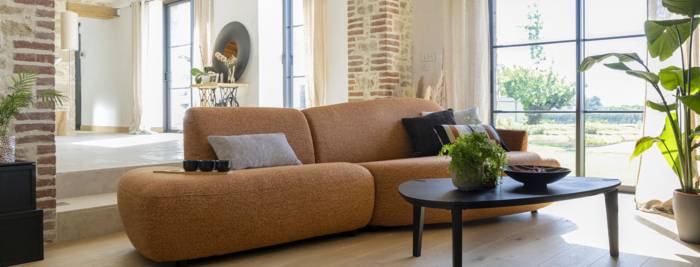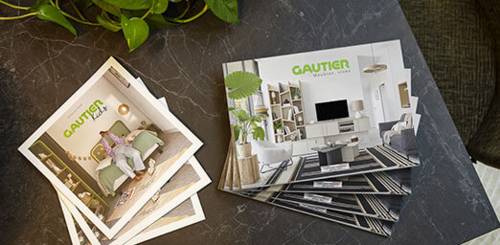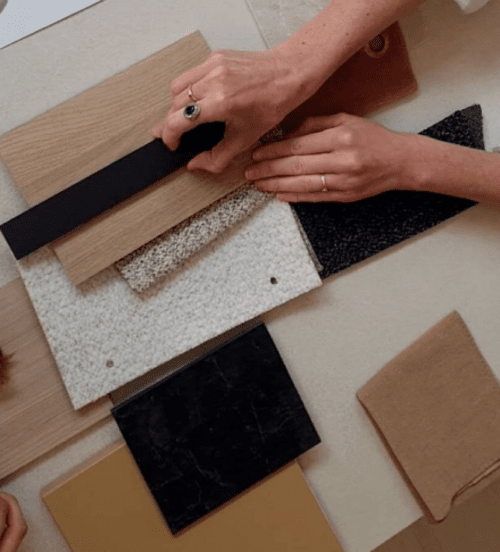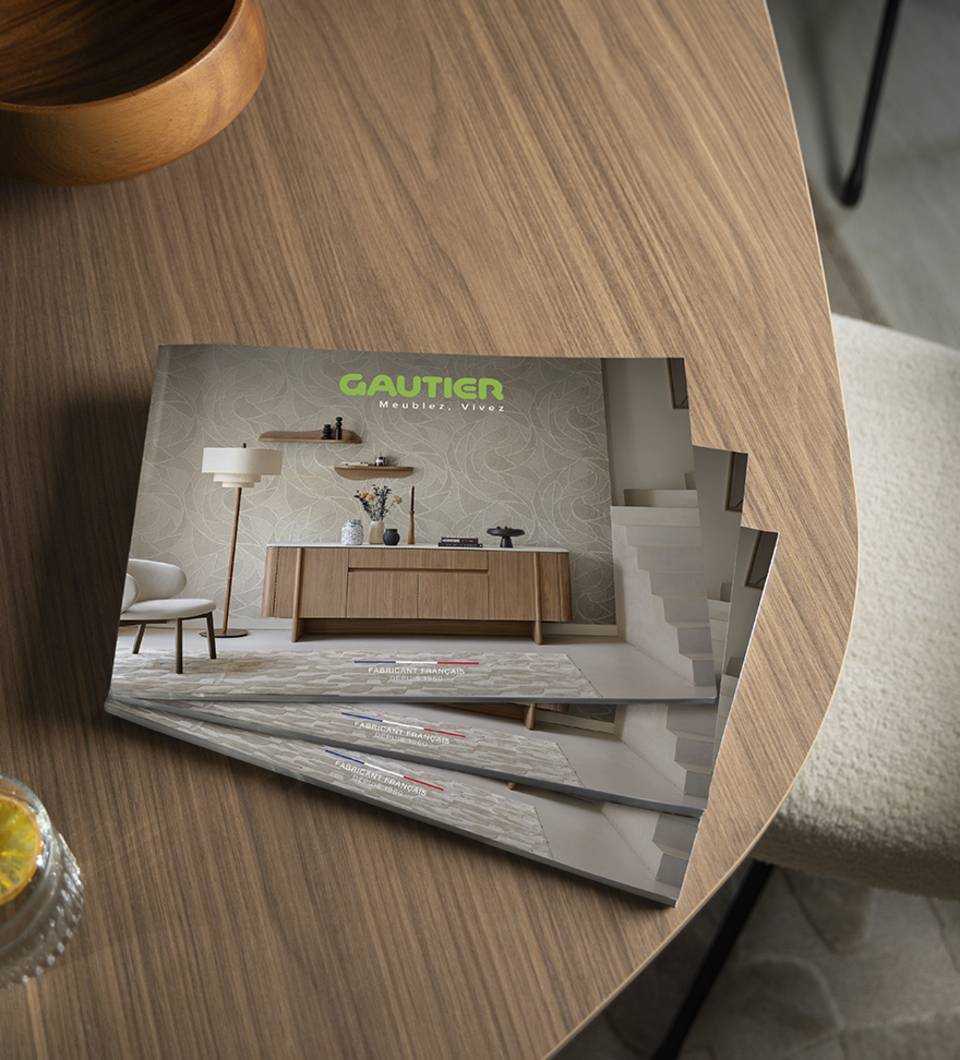Interior designers' advice
Clever ways to arrange your room and maximise space
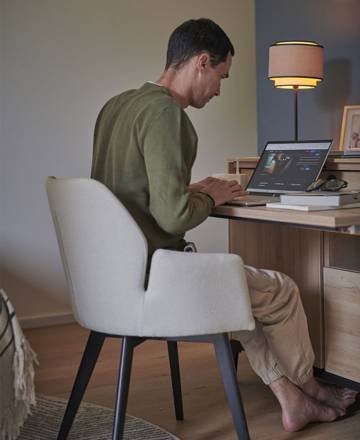
If your living spaces are on the smaller side, every square metre counts. That's why it's crucial to think about how to arrange your room to make it a practical, functional space for the whole family to enjoy. Start by taking exact measurements of the space and writing them down, to make sure you select the right furniture to suit your needs.
Go for space-saving furniture
Space-saving furniture is an excellent way to maximise your living room. Practical and functional pieces such as units with drawers, folding tables or tables with lift-up tops are particularly suitable for a small lounge. If you love entertaining guests but don't want to clutter up your kitchen or dining room, consider going for an extendable table with a hidden opening and extension system. In the bedroom, go for sofa beds to create a relaxing area during the day and a sleeping space at night. Murphy beds also help save you valuable square metres whilst creating a comfortable space for excellent quality sleep. They're perfect for a guest bedroom doubling as a home office and for growing families.
All this furniture makes it really easy to transform your room to suit your needs, creating versatile zones for a variety of everyday activities.
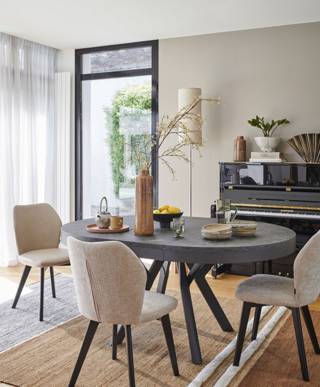
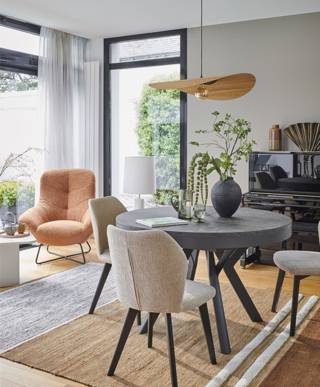
Choose furniture with built-in storage
Storage is essential for keeping your rooms tidy. Choose furniture with built-in storage options such as drawers under the bed, shelves with storage baskets or modular compartments. Use storage boxes and organisers to maximise the space in your cupboards and on your shelves.
If your living room is small, try to go for ingenious, multi-purpose units that take up little space. Sofas with storage chests, tables with drawers or modular shelves mean you can combine practicality with style.
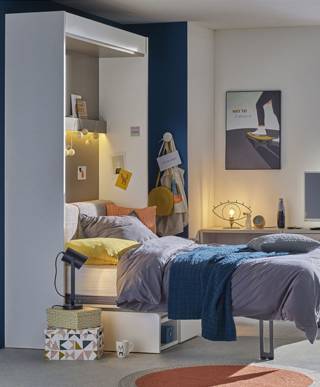
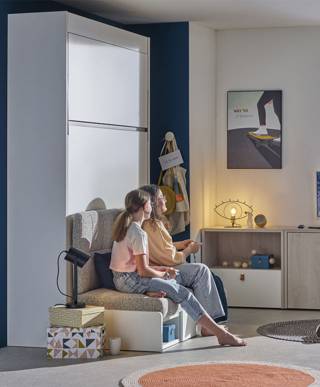
Don't forget to make use of walls and corners
Walls and corners are often under-used. Putting up wall shelves, for example, means you can maximise the vertical space available without restricting the space for circulating around the room. They are really practical and stylish, without taking up floor space; they also look great above doors. As well as creating an uncluttered feel with their light and airy design, some designs are enclosed to provide spacious storage. Make the most of corner space with corner shelves or furniture designed especially for smaller rooms.
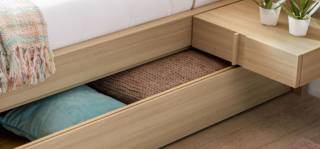
Create an illusion of space
Mirrors reflect natural and artificial light, opening up a room and making it appear bigger – especially when positioned opposite a window. Hanging a large mirror on the far wall in your living room opens up the space, as if you can see through into another lounge beyond. For best results, bear in mind that the mirror should be proportionate to the size of the room. Try combining different styles of mirrors on a wall to create your own unique style.
Play around with colours and lighting
The colours you choose can have a significant impact on the perception of space. Light colours such as white, pastels and neutral shades create a light, bright feel. It's best to avoid dark colours that tend to make the room look smaller, although you can add splashes of colour to your living space in the form of carefully selected ornaments and decoration. Lighting also plays a crucial role in making your room appear larger: free-standing lamps and wall lights are a great way to brighten up dark corners.
Define your spaces
If you have a multi-purpose room, try using rugs or room dividers to create a visual separation between the different areas without reducing the space available. Modular furniture such as screens or open shelves can also be used to subtly define spaces in the room. To separate living spaces, go for storage units such as shelves or bookshelves that help bring depth to the room. Finally, sliding doors help save space so you can create plenty of storage without anything being on show.
